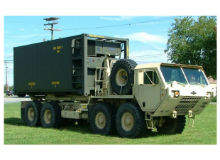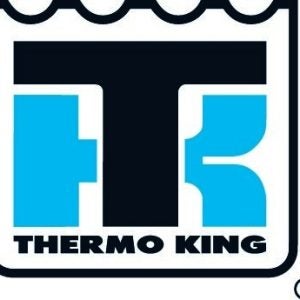Klinge Celebrates Earth Week through Sustainable Solutions
As an innovator and leader in the industry, Klinge Corp was one of the first transport refrigeration manufacturers to introduce electronic, then microprocessor controllers, and to produce transport refrigeration equipment enabling their customers to use the popular new alternative refrigerants, R-134a, and R-404a. Klinge continues their commitment to sustainable solutions through energy efficient designs, equipment that prevents hazardous materials from entering the atmosphere, and through the use of generator sets with significantly reduced exhaust emissions.
The Montreal Protocol that came into force in 1989 established requirements that began the worldwide phase-out of ozone-depleting CFCs (chlorofluorocarbons). Until concerns about depletion of the ozone layer arose in the 1980s, the most widely used refrigerants were R-12 and R-22.
Klinge remains committed to reducing ozone depletion. The company was one of the first transport refrigeration manufacturers to produce equipment that used the more environmentally-friendly refrigerants R-134a and R-404a. Klinge’s use of alternative refrigerants has helped to phase out ozone-depleting refrigerants.
Klinge’s Explosion-Proof Refrigerated Container ensures that hazardous materials are kept safe in potentially explosive environments such as oil rigs and oil tankers. The Explosion-Proof Refrigerated Container complies with the guidelines included in ATEX Directive for equipment used in potentially explosive atmospheres and the ISO container is DNV certified. Klinge’s Explosion-Proof Refrigerated Container is designed for safe operation in Hazardous Zone 2 areas. An Explosion-Proof unit for operation in Hazardous Zone 1 areas is expected to be released in the summer of 2012.
Klinge’s Dual Refrigerated Container system has numerous built-in fail-safes to ensure hazardous materials are kept safe during storage and transport to ensure the earth is not harmed. The Dual Refrigerated Container has two full capacity reefer units, automatic switch-over in case of an emergency, back-up power supply, and temperature monitoring.
As a single yellowfin tuna can be valued at tens of thousands of dollars, some companies opt for shipping fresh seafood by air for fear that freezing the seafood would reduce quality.
Klinge’s ultra-low temperature freezer equipment allows companies to reliably store and transport valuable seafood by ocean freight. Companies can reduce carbon emissions by choosing to transport frozen seafood by ocean freight using Klinge freezer equipment instead of air freight.
Current efforts on improving air quality originate from the Environmental Protection Agency’s Clean Air Act of 1970, which was passed a few months after the first Earth Day. The Act regulates air emissions from stationary and mobile sources. In the 1990s, the EPA began an aggressive, long-term effort to reduce emissions from industrial equipment, such as diesel-powered generator sets.
Klinge supports the efforts of the EPA and uses EPA-Approved Tier 4 diesel-powered generator sets. The Tier 4 regulation requires diesel engine exhaust emissions that are significantly lower than previous Tiers.
Klinge Corp’s MPC is designed around a proven technology with a robust microprocessor as the central controlling device. The ‘on demand’ defrost system optimises the power usage for defrost and also optimises the time available for refrigeration. This eliminates the use of air switches or plain hour interval timing between defrosting.
The sophisticated microprocessor controller provides reliable temperature control with an accuracy of ±0.4°F (±0.25°C) in extreme environments. This level of precision lowers energy usage.







